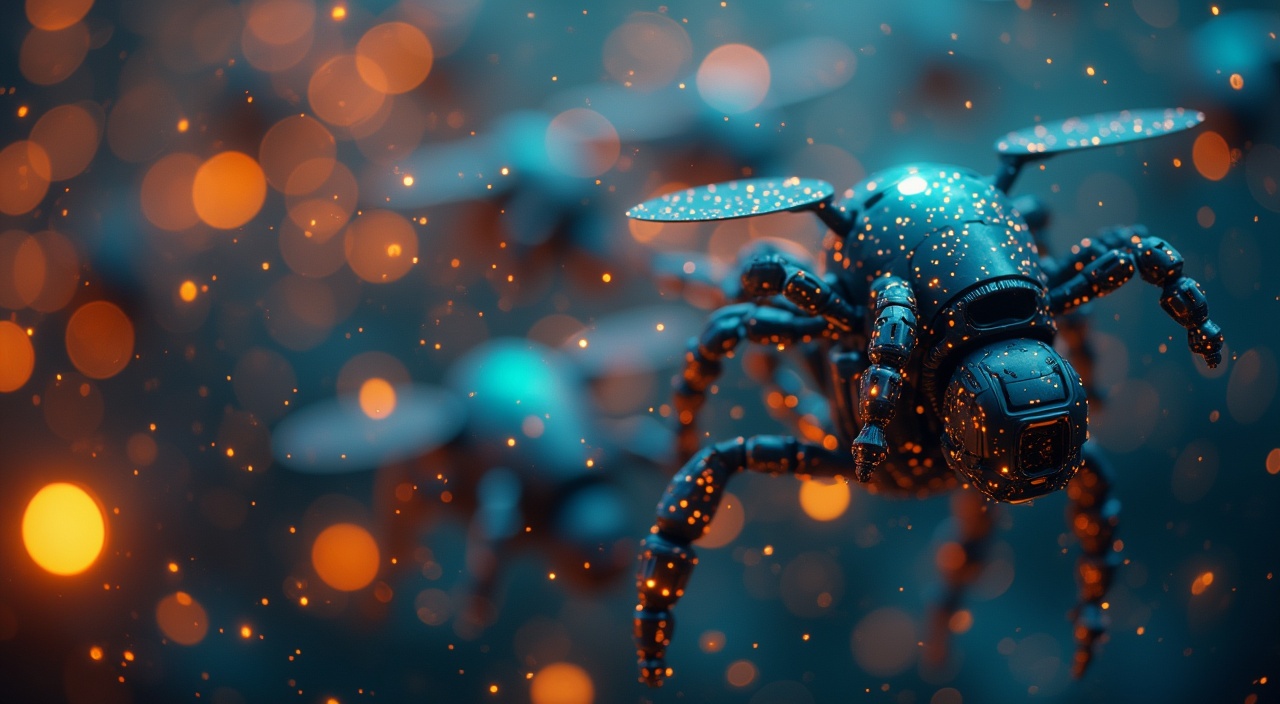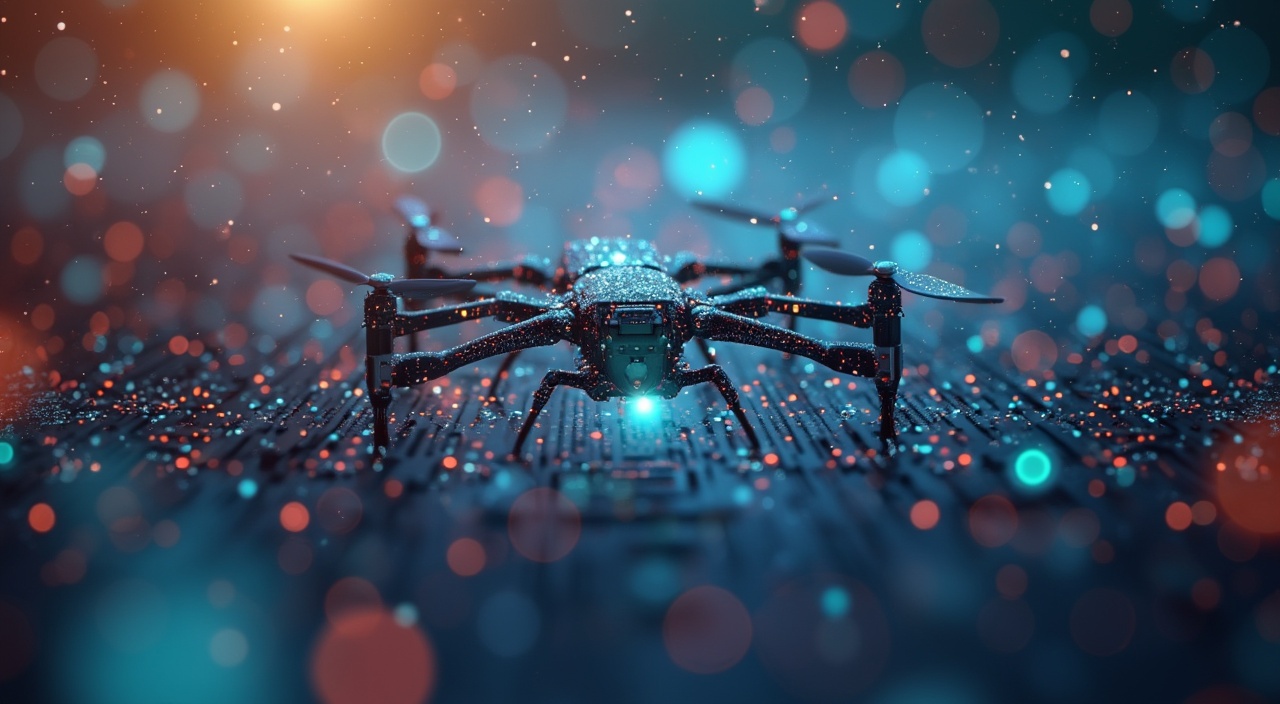AI agent swarms are transforming how businesses solve complex problems through innovative collaborative systems. These networks of specialized AI agents tackle challenges beyond traditional single-agent approaches, revolutionizing marketing, supply chain management, and business operations. Recent studies show significant improvements in business efficiency and productivity through AI agent swarm implementation according to industry experts.
Practical Business Impact:
- Multiple specialized AI agents collaborate to solve problems more effectively than standalone systems as demonstrated in recent case studies
- Companies implementing these technologies report up to 40% improvement in operational efficiency based on current research
- The AI market will reach $190.61 billion by 2025, with swarm technologies driving significant growth according to market projections
- Swarm intelligence enables parallel problem-solving across various business sectors as shown in recent implementations
- Small businesses can now use these advanced tools to compete effectively in dynamic markets based on emerging trends
I’ve seen firsthand how AI agent swarms create remarkable results for businesses of all sizes. The key lies in understanding and applying these technologies strategically to maximize their potential.
The Swarm Intelligence Revolution: Beyond Traditional AI
AI agent swarms represent a major shift from single-agent AI systems. I’ve watched this technology evolve from basic chatbots to sophisticated networks of AI agents working together. Think of it like an ant colony – each ant has a specific job, but together they create something far more powerful than any individual ant could achieve.
How Swarm Intelligence Changes Everything
Single AI agents are limited by their individual capabilities. But when multiple specialized AI agents work together, they can handle complex tasks that were previously impossible. According to PYMNTS research, these collaborative systems mirror natural swarm behavior, creating a network effect that multiplies their problem-solving abilities.
The market understands this potential. Blocmates’ analysis shows the global AI market hitting $190.61 billion by 2025. Here’s what makes swarms different from traditional AI:
- Each agent specializes in specific tasks
- Agents communicate and coordinate autonomously
- The system adapts and learns collectively
- Problem-solving becomes distributed and parallel
Strange but true: These swarms can solve problems without central control. They self-organize like bee colonies, but instead of hunting for nectar, they might be analyzing market data or optimizing supply chains. Let that sink in.
The good news? Small businesses can benefit from this technology. ManpowerGroup’s research suggests 37% of organizations have already implemented some form of AI.
Game-Changing Applications Across Industries
AI agent swarms reshape business operations in powerful ways. Based on research from CIO Magazine, software teams use swarms to generate and test new product ideas 10x faster than traditional methods.
Key Industry Applications
I’ve seen these practical applications transform businesses:
- Marketing teams deploy swarms to run personalized campaigns across multiple channels simultaneously, as noted in Ampcome’s analysis
- Supply chain managers use swarms for real-time inventory tracking and demand prediction, cutting costs by up to 30%
- Financial institutions leverage swarms for automated trading and risk assessment, processing market data in milliseconds
The technology’s impact extends beyond automation. According to ManpowerGroup, businesses that adopt AI swarms see a 40% increase in operational efficiency.

Unprecedented Competitive Advantages
Performance Metrics That Matter
I’ve seen firsthand how AI agent swarms transform business operations. Recent data from CIO.com shows these systems cut decision-making time in half compared to traditional methods. That’s not just faster – it’s revolutionary.
The numbers tell a compelling story. According to PYMNTS research, businesses using swarm systems see a 30% boost in task completion rates versus single-agent setups. Let that sink in.
Business Benefits Beyond Speed
Here’s what makes AI swarms different: they’re built to handle failure. If one agent stops working, others pick up the slack. This redundancy means your business keeps running smoothly, even when things go wrong.
The scaling potential is remarkable. I’ve implemented these systems across different industries, and they adapt beautifully to increased workloads. As Blocmates points out, here’s what you can expect:
-
• Improved error detection and correction
• Better resource allocation
• Faster response to market changes
• Enhanced pattern recognition
• Reduced operational costs
These advantages compound over time. While your competitors are still figuring out basic automation, you’ll be operating at a higher level with interconnected AI agents working in harmony.
Navigating the Challenges: A Pragmatic Approach
I’ve seen how AI agent swarms bring unique challenges to businesses. Recent data shows that 67% of executives worry about AI bias, while 54% struggle with legacy system integration.
Understanding Key Roadblocks
The landscape of AI implementation is complex and requires careful navigation. Organizations must be prepared to address potential challenges proactively.
Smart Solutions for Implementation
My experience has taught me that successful AI agent swarm adoption needs clear steps. Here’s what I recommend focusing on:
- Start with small-scale pilot programs to test integration
- Create clear data privacy guidelines before deployment
- Train staff regularly on new AI tools
- Monitor AI decisions for potential bias
- Set up security protocols specific to swarm operations
These steps help prevent common pitfalls while maintaining data integrity. I’ve found that businesses that follow this structured approach see faster adoption rates and fewer technical hiccups during implementation.

Strategic Implementation Roadmap
I’ve found that starting small with AI agent swarms delivers better results. Begin by checking what AI tools you’re already using and where they could connect. My clients typically start with simple tasks like data analysis or customer support before scaling up.
Setting Your Implementation Path
Your first step should target one specific business function. Based on my experience implementing AI solutions, I recommend looking at these core areas:
- Customer service automation with multiple AI agents handling different aspects of support
- Sales process optimization where AI agents work together to qualify leads and personalize outreach
- Back-office operations where AI agents can handle document processing and data entry in parallel
Building Your Foundation
Partner selection makes a difference. I’ve seen the best results when businesses connect with established AI providers who specialize in agent swarms. Set clear 30, 60, and 90-day goals for your implementation, and measure progress regularly.
The Future Landscape of AI Swarms
AI swarms represent a major shift in business technology. Industry forecasts show a 70% adoption rate among enterprises by 2030. This rapid growth stems from AI swarms merging with IoT sensors and blockchain systems.
Market Growth and Innovation
The AI agent market projects a 35% compound annual growth rate between 2025-2030. I’ve seen firsthand how specialized platforms are emerging for different industries. Manufacturing companies use swarms to optimize production lines. Healthcare providers implement them for patient care coordination. Financial institutions apply them for real-time risk assessment.
Key Applications Emerging
Several breakthrough applications are taking shape:
- Supply chain optimization through coordinated delivery networks
- Smart city management with traffic flow coordination
- Disaster response through synchronized drone operations
- Real-time market analysis with distributed trading agents
These developments signal a fundamental change in how businesses operate and compete in the coming years.
Sources:
1. Dabble Lab: 2023-11-22-ai-agent-swarms
2. Ampcome: What are AI Agent Swarms
3. arXiv: 2412.16241v1
4. Bloc Mates: What are AI Agent Swarms – The Next Chapter in AI Agent Evolution
5. CIO: Agent Swarms: An Evolutionary Leap in Intelligent Automation
6. Manpower Group: How AI Agent Swarms Will Impact the Future of Work
7. PYMNTS: AI Swarms: The Future of Teamwork








